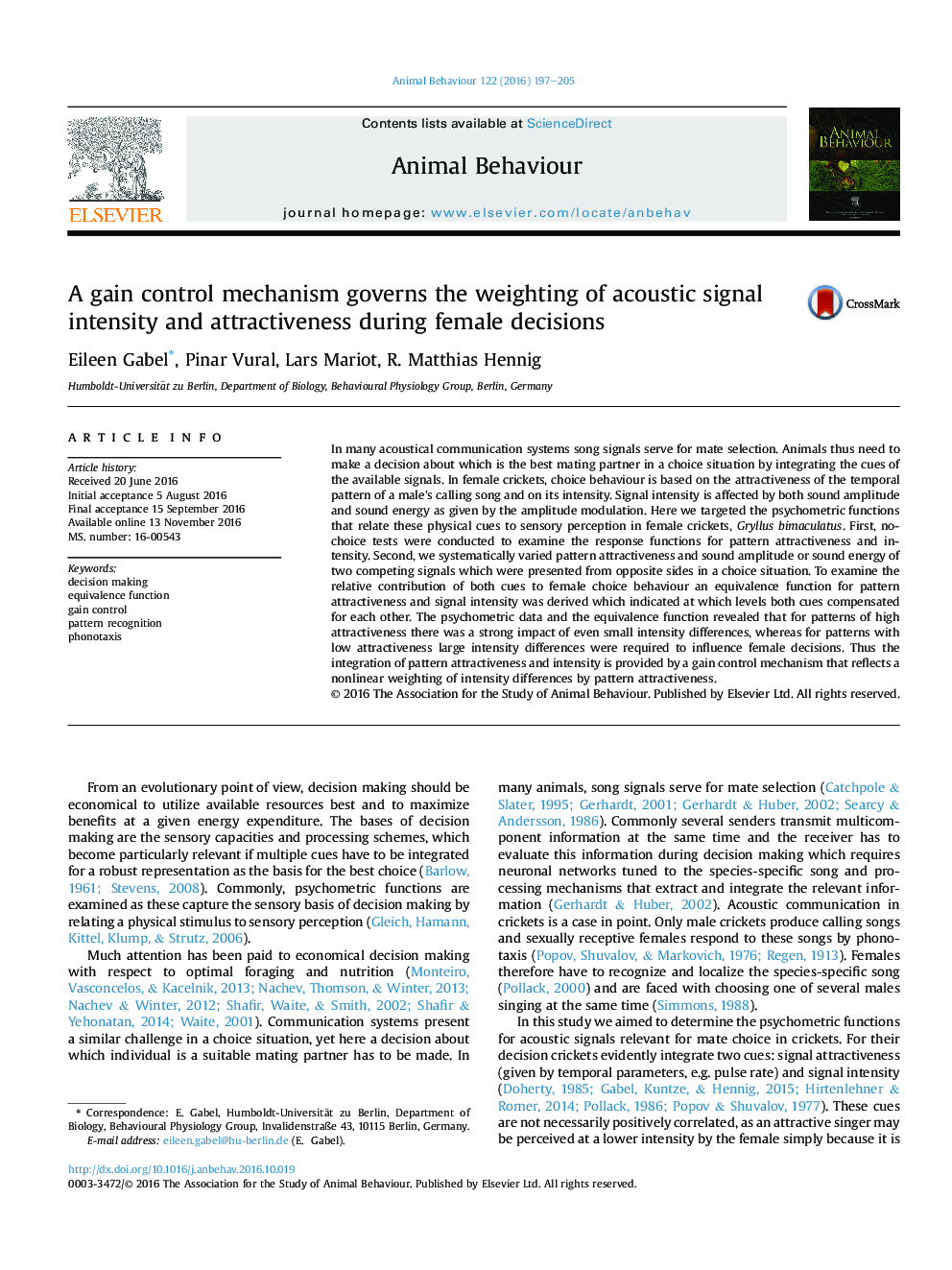| Article ID | Journal | Published Year | Pages | File Type |
|---|---|---|---|---|
| 5538386 | Animal Behaviour | 2016 | 9 Pages |
Abstract
In many acoustical communication systems song signals serve for mate selection. Animals thus need to make a decision about which is the best mating partner in a choice situation by integrating the cues of the available signals. In female crickets, choice behaviour is based on the attractiveness of the temporal pattern of a male's calling song and on its intensity. Signal intensity is affected by both sound amplitude and sound energy as given by the amplitude modulation. Here we targeted the psychometric functions that relate these physical cues to sensory perception in female crickets, Gryllus bimaculatus. First, no-choice tests were conducted to examine the response functions for pattern attractiveness and intensity. Second, we systematically varied pattern attractiveness and sound amplitude or sound energy of two competing signals which were presented from opposite sides in a choice situation. To examine the relative contribution of both cues to female choice behaviour an equivalence function for pattern attractiveness and signal intensity was derived which indicated at which levels both cues compensated for each other. The psychometric data and the equivalence function revealed that for patterns of high attractiveness there was a strong impact of even small intensity differences, whereas for patterns with low attractiveness large intensity differences were required to influence female decisions. Thus the integration of pattern attractiveness and intensity is provided by a gain control mechanism that reflects a nonlinear weighting of intensity differences by pattern attractiveness.
Related Topics
Life Sciences
Agricultural and Biological Sciences
Animal Science and Zoology
Authors
Eileen Gabel, Pinar Vural, Lars Mariot, R. Matthias Hennig,
